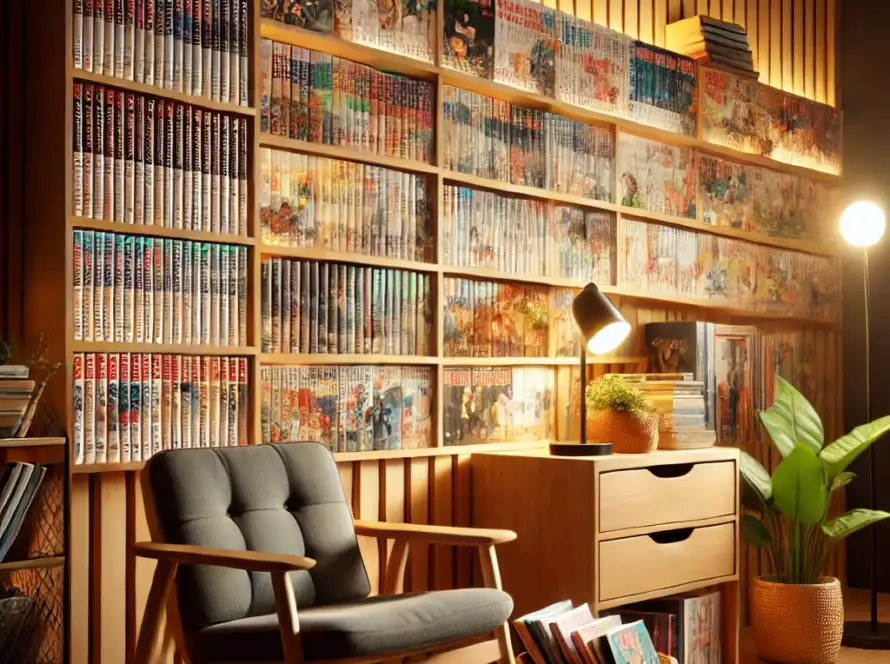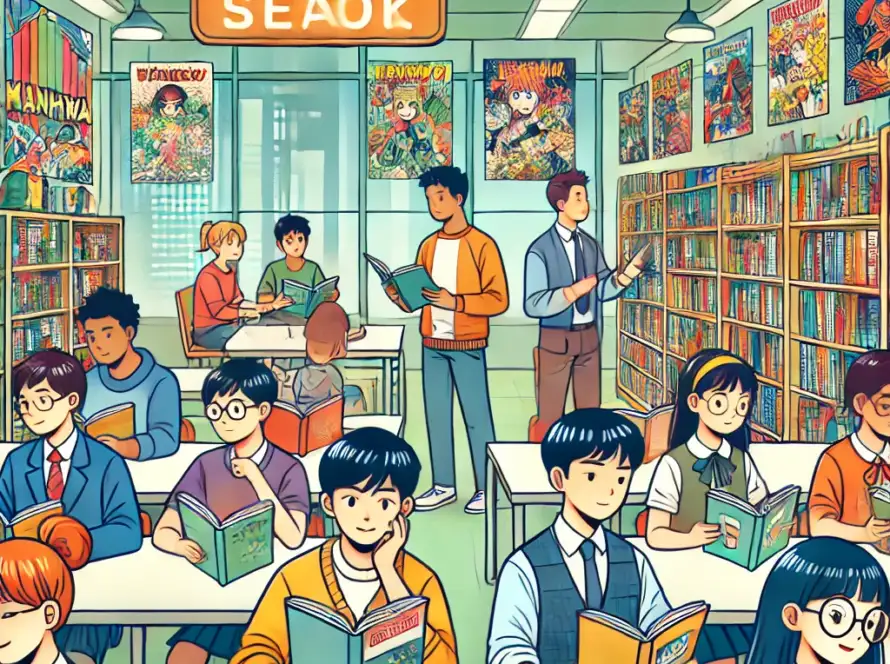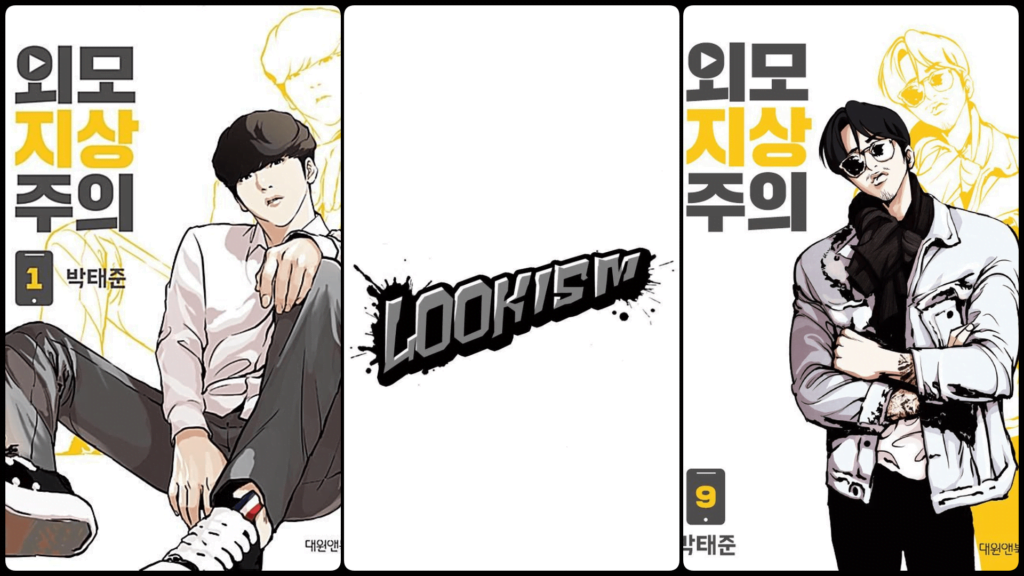
“Lookism”, a popular South Korean webtoon created by Park Tae-jun, has captivated readers worldwide with its compelling narrative and thought-provoking themes. This manhwa delves into the societal pressures surrounding appearance and the harsh realities of bullying, offering a profound exploration of self-perception, identity, and the double standards of beauty. In this comprehensive review, we will delve into the cultural impact of “Lookism Webtoon”, examine its plot and characters, and discuss the themes and insights that make it a standout in the world of webcomics.
What is “Lookism”? Overview of the Lookism Manhwa
“Lookism” follows the life of Daniel Park, a high school student who faces the harsh realities of societal beauty standards. Initially, Daniel endures bullying due to his overweight appearance. However, his life takes a dramatic turn when he mysteriously gains the ability to switch between two bodies: his original self and a new, physically attractive form. This extraordinary ability thrusts Daniel into a world where he navigates dual lives, each providing unique perspectives on society’s obsession with appearance. Through this duality, Lookism manhwa offers a profound exploration of how looks influence personal and social dynamics.
The Cultural Impact of “Lookism”
“Lookism” has made a significant impact on global audiences, especially in addressing issues related to beauty, bullying, and societal pressure. As webtoons gain prominence as a modern medium, Lookism webtoon distinguishes itself by seamlessly blending entertainment with social commentary. Its exploration of beauty standards and the consequences of lookism resonates deeply with readers across various cultures, highlighting universal struggles with self-image and acceptance. This ability to tackle serious issues while remaining engaging has solidified Lookism manhwa as a culturally influential work in the world of webcomics.
Plot Synopsis
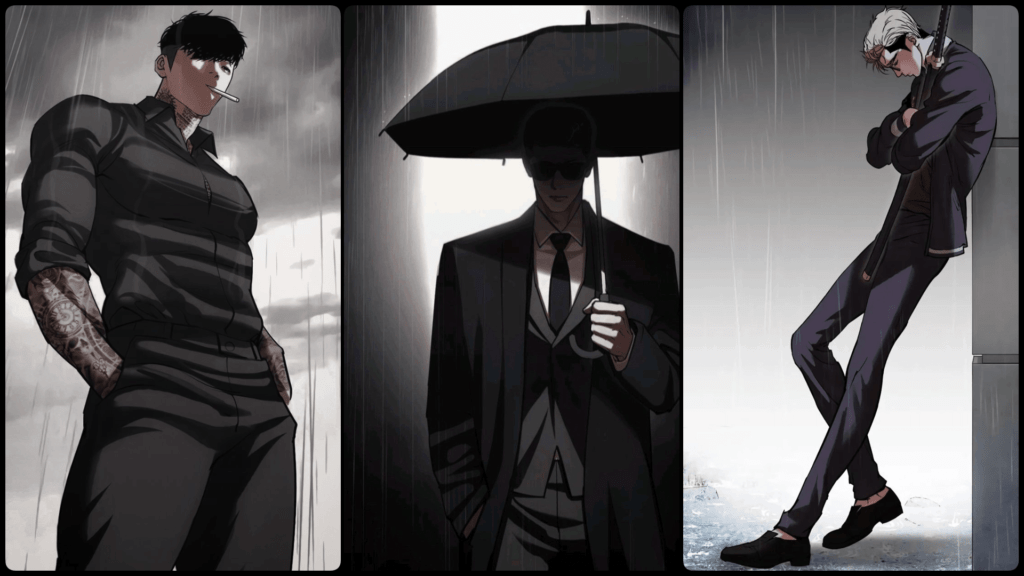
The Premise
The core of Lookism webtoon revolves around Daniel Park’s dual existence. Initially an outcast due to his overweight appearance, Daniel’s life changes dramatically when he gains the ability to switch between two bodies: his original self and a new, attractive form. This transformation creates a stark contrast in his experiences, highlighting the superficial nature of societal judgments and the privileges associated with physical appearance. Through this duality, the manhwa explores how society’s emphasis on looks affects personal interactions and self-perception.
Major Story Arcs
Lookism webtoon unfolds through several major story arcs, each examining different facets of Daniel’s life and the broader implications of his transformation. These arcs include:
- High School Dynamics: The series delves into the complexities of high school life, exploring how Daniel navigates social hierarchies and peer relationships from both his original and attractive selves.
- The Dark Side of Beauty: This arc addresses the negative aspects of beauty, such as jealousy, exploitation, and the superficial judgments people face, providing a critical look at the darker consequences of societal standards.
- Struggles with Identity and Self-Worth: As Daniel balances his dual lives, he confronts issues related to identity and self-worth, grappling with the internal conflict between his true self and the persona his new appearance affords him.
Through these arcs, Lookism webtoon offers a rich and nuanced exploration of its themes, portraying the multifaceted nature of identity and societal expectations.
Character Development and Dynamics
Daniel Park
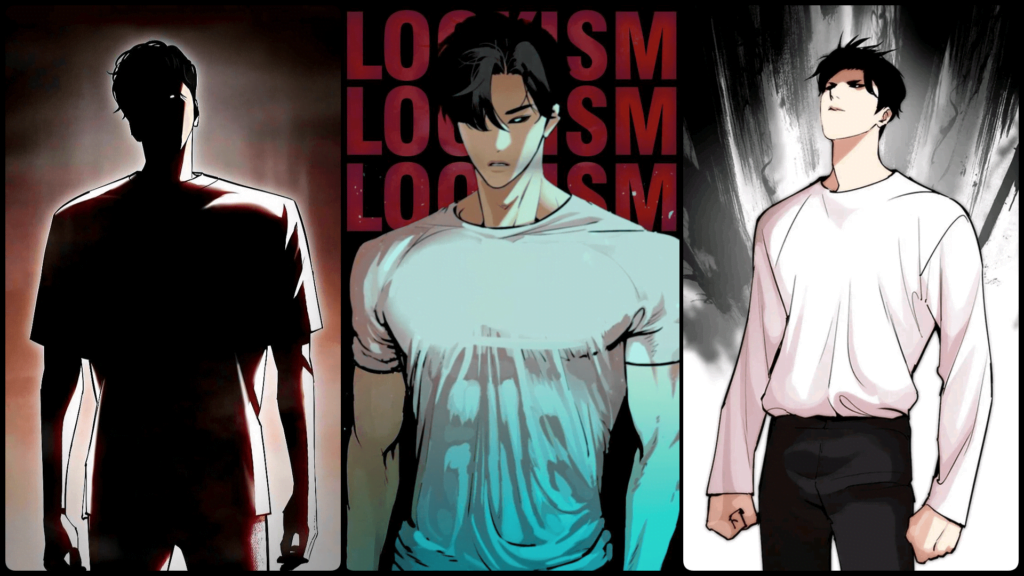
The protagonist of “Lookism Webtoon”, Daniel Park, represents the ongoing struggle between inner worth and outward appearance. His journey is a powerful exploration of how society often judges people based on looks rather than their true character. Starting off as an overweight, bullied teenager, Daniel’s life takes a dramatic turn when he mysteriously gains the ability to switch between his original body and a new, more conventionally attractive one. This duality forces him to confront the harsh realities of how differently the world treats him based on his appearance. Daniel’s character development is profound, as he learns to navigate both identities while seeking acceptance and understanding of his true self.
Vasco
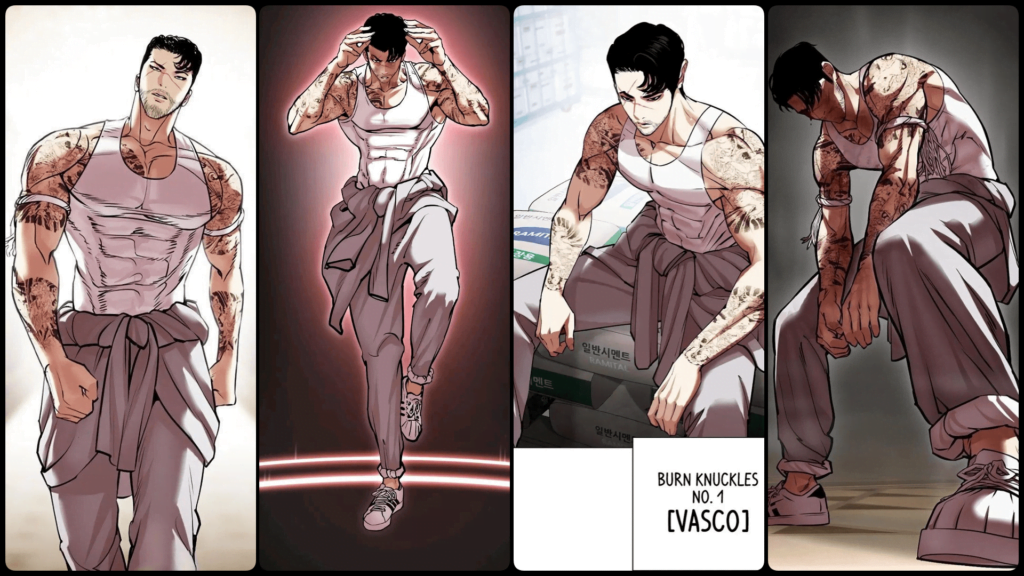
Vasco, a character who might initially come across as a typical tough guy, shatters stereotypes with his surprising mix of strength and gentleness. He’s a leader of the Burn Knuckles gang, known for his fierce loyalty and fighting prowess. However, beneath that intimidating exterior lies a heart of gold. Vasco’s kindness and dedication to protecting the weak make him one of the most beloved characters in the series. His dynamic with Daniel is also noteworthy, as Vasco becomes a source of inspiration and support, embodying the idea that true strength comes from kindness.
Zack Lee
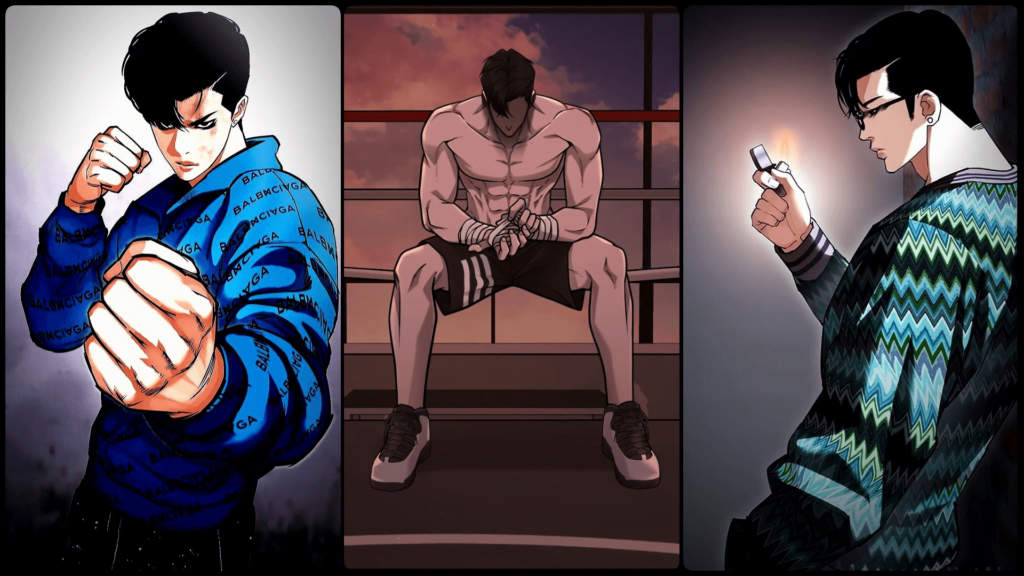
Zack Lee is a complex character whose tough exterior hides deeper insecurities. A skilled fighter and someone who initially comes off as brash and aggressive, Zack struggles with feelings of inadequacy and a desire to prove himself. His relationship with Mira, a girl he deeply cares for, reveals a more vulnerable side to his character. Zack’s journey in Lookism manhwa is one of self-discovery, as he learns to confront his insecurities and grow beyond the image of the tough guy he feels pressured to maintain.
Jay Hong
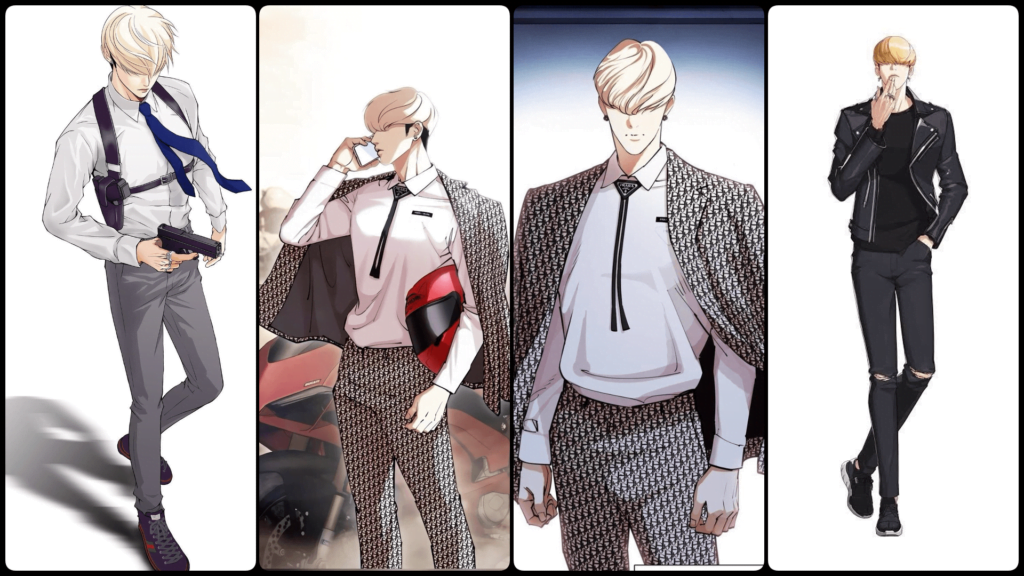
The silent guardian of the story, Jay Hong is an enigmatic character who quietly supports Daniel throughout his journey. While he doesn’t speak much, his actions speak volumes. Jay’s unwavering loyalty and subtle gestures of kindness make him a crucial part of Daniel’s support system. His reserved nature and mysterious background add an intriguing layer to the story, making readers curious about his motivations and the depth of his character.
Supporting Cast: From Friends to Foes
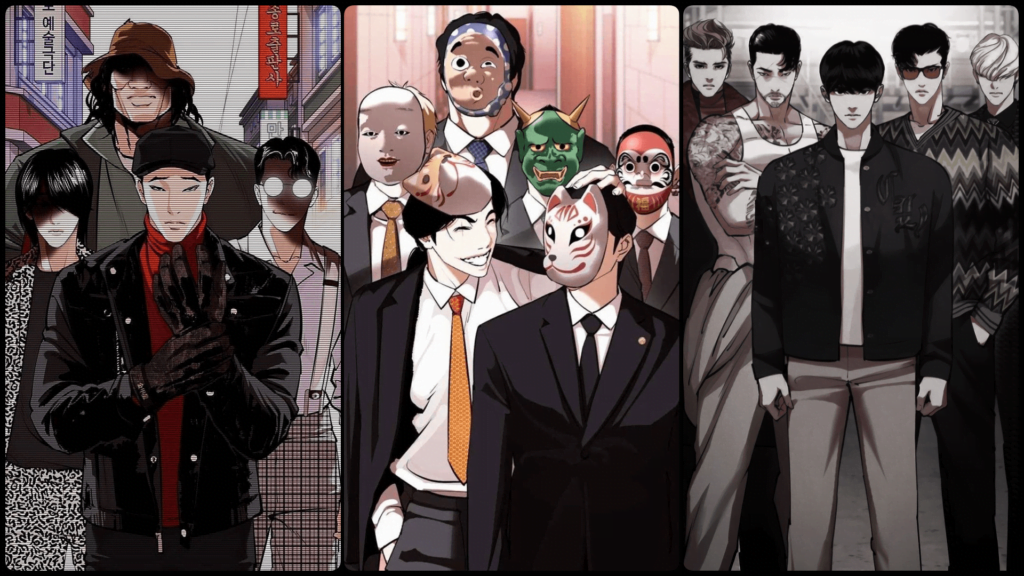
The supporting characters in Lookism manhwa provide a rich tapestry of relationships, ranging from loyal friends to menacing antagonists. Each of these characters plays a pivotal role in shaping Daniel’s journey. Some, like Zoe Park and Crystal Choi, offer friendship and support, helping Daniel navigate the complex social dynamics of his school. Others, like Logan Lee and Jiho Park, serve as antagonists who challenge Daniel in ways that force him to grow and adapt.
These interactions not only contribute to Daniel’s development but also reflect the broader themes of the Lookism webtoon—the struggle for identity, the impact of bullying, and the importance of true friendship. The diversity of the supporting cast adds depth to the narrative, making “Lookism” not just a story about Daniel Park, but a multifaceted exploration of human relationships and the challenges of growing up in a society obsessed with appearances.
Themes and Motifs

The Concept of Lookism
At its core, Lookism manhwa is a powerful exploration of discrimination based on appearance. This theme resonates deeply with many readers, as it reflects real-world issues of prejudice and bias that people face daily. Through its narrative, the manhwa critiques the societal standards that prioritize physical beauty over character and substance. The story doesn’t shy away from showcasing the harsh realities of how people are treated differently based on their looks, often leading to unjust treatment and marginalization. By bringing this issue to the forefront, “Lookism” invites readers to question their own perceptions and biases, making it a thought-provoking read that challenges conventional norms.
Duality and Identity
One of the most compelling aspects of Lookism webtoon is its exploration of duality and identity. Daniel Park’s ability to switch between two bodies—one reflecting his original self and the other a more attractive version—serves as a powerful metaphor for the internal conflict many people experience between their true selves and the personas they project to the world. This duality is not just about physical appearance; it delves into deeper questions of self-worth, acceptance, and the struggle to maintain one’s identity in a world that often judges by superficial standards. The theme is central to the manhwa’s narrative, as it explores how identity is both shaped by and at odds with societal expectations, making Daniel’s journey one of self-discovery and growth.
Societal Pressure and Standards
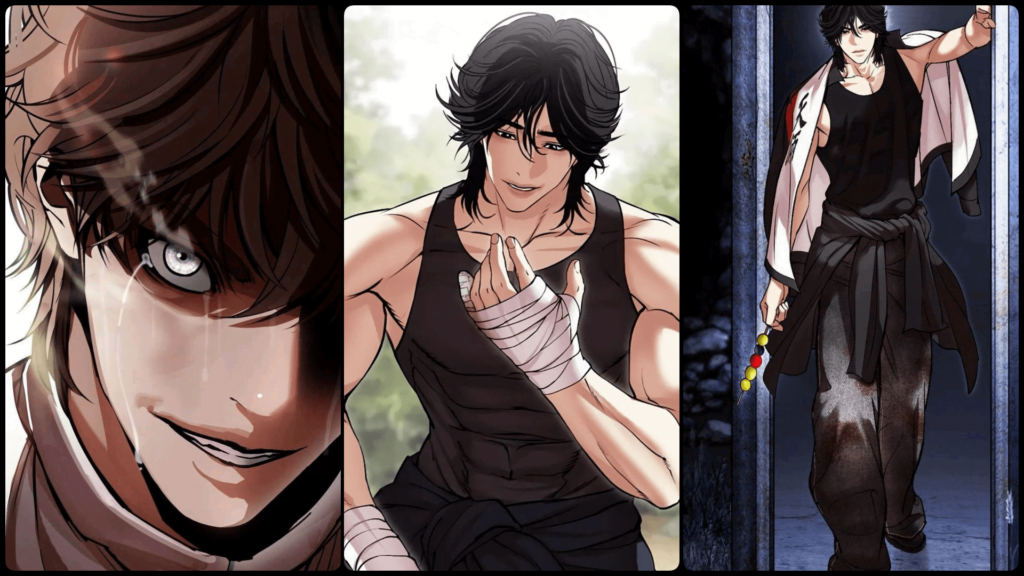
“Lookism Webtoon” also addresses the immense pressure society places on individuals to conform to certain beauty standards. The webtoon does a remarkable job of highlighting how these pressures can lead to bullying, social hierarchies, and even self-loathing. Characters in the story are constantly navigating a world where outward appearance dictates social status, acceptance, and even opportunities. This pressure often results in toxic behaviors, as people are driven to conform at the expense of their authenticity and well-being. By shedding light on these issues, Lookism manhwa not only tells a compelling story but also serves as a critique of the unrealistic and often harmful standards that society imposes on individuals, particularly the youth.
Art Style and Visual Storytelling
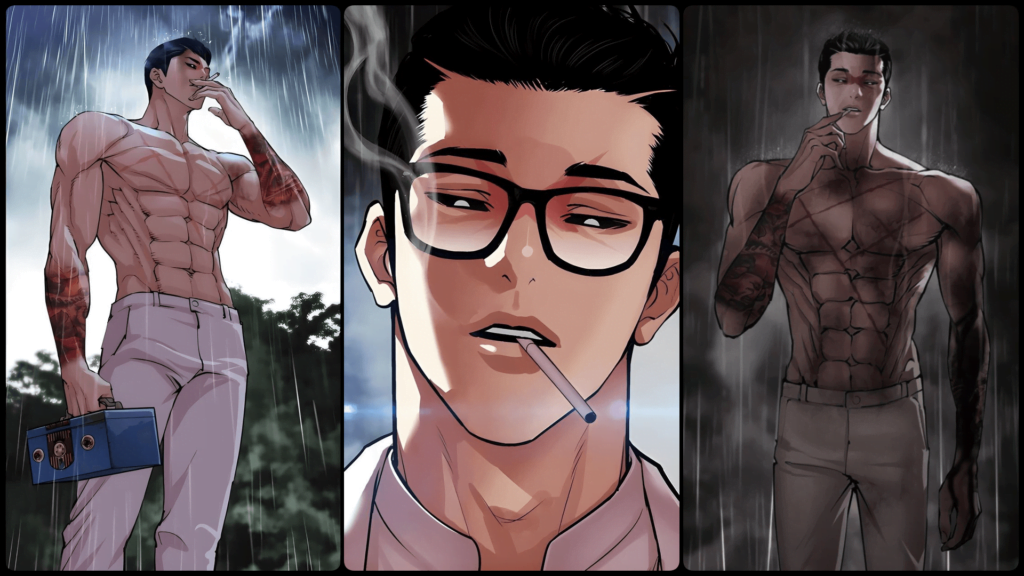
Evolution of Art Style Throughout the Series
One of the most fascinating aspects of “Lookism Manhwa” is the evolution of its art style. As the series progresses, there’s a noticeable shift in the artwork, mirroring the growth of the characters and the increasing complexity of the narrative. Early chapters feature simpler, more straightforward illustrations that align with the initial stages of Daniel’s journey. As the story deepens and explores more intricate themes, the art style becomes more refined, with greater attention to detail, dynamic expressions, and more sophisticated shading and coloring. This evolution not only reflects the improvement of the artist but also enhances the overall storytelling experience, drawing readers deeper into the world of “Lookism Manhwa”.
Symbolism in Visuals: Hidden Meanings
The visual elements in “Lookism” are rich with symbolism, often hinting at deeper meanings and revealing character motivations. From subtle changes in color palettes to the use of shadows and light, the manhwa uses visuals to convey emotions and themes that might not be immediately apparent through dialogue alone. For instance, the contrasting imagery of Daniel’s two bodies often highlights the tension between how he perceives himself and how the world sees him. Symbolic imagery is also used to reflect the inner turmoil of characters, with certain panels depicting their fears, desires, and insecurities in a visual language that speaks volumes. This layer of visual storytelling adds a profound depth to the manhwa, making it a multi-dimensional experience for readers.
Character Design: Reflecting Inner and Outer Beauty
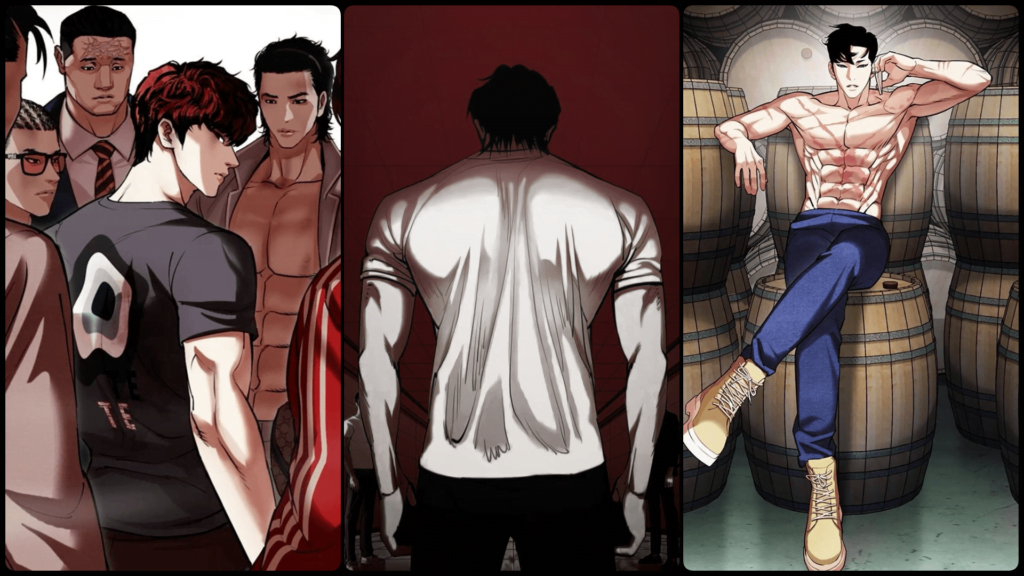
Character design in “Lookism” plays a crucial role in conveying the inner struggles and outer personas of the characters. Each character is crafted with careful consideration of how their appearance reflects their personality, background, and personal battles. Daniel’s two contrasting appearances are the most obvious example, but other characters also embody this theme. For instance, Vasco’s intimidating physique juxtaposed with his gentle nature challenges the stereotype that outward strength equates to aggression. Similarly, characters like Zack Lee and Mira Kim are designed to reflect the duality of their tough exteriors and the vulnerabilities they hide within. These designs are not just about aesthetics; they serve as a visual narrative tool that enhances the storytelling by providing insights into the characters’ true selves and the masks they wear in society.
Social Commentary
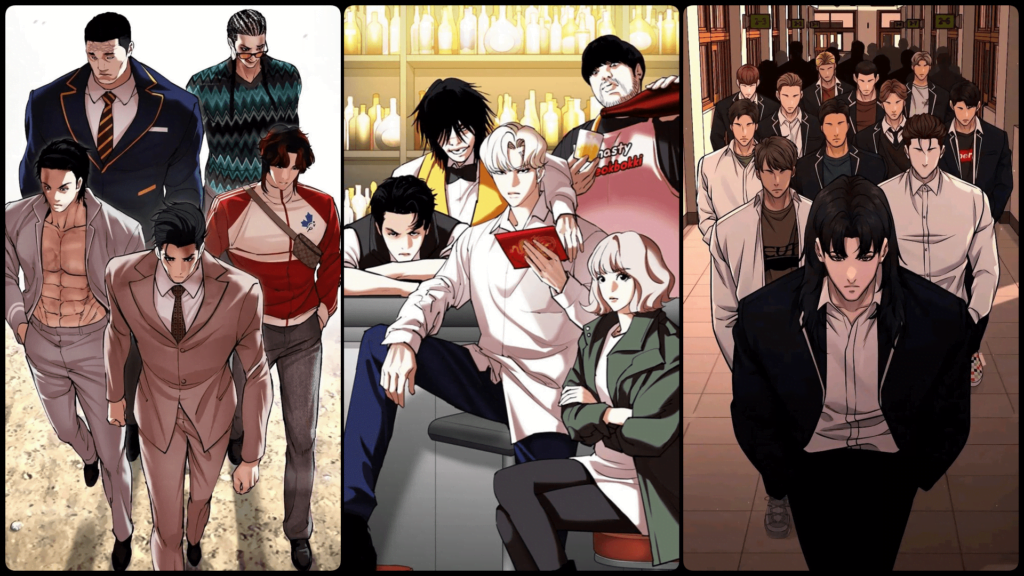
Critique of Modern Beauty Standards
“Lookism” offers a powerful critique of modern beauty standards, challenging readers to question the fairness and morality of judging people based solely on their appearance. The manhwa delves into the harsh realities of how society often prioritizes physical beauty over character and substance, creating an environment where those who don’t fit these narrow ideals are marginalized. Through its characters and narrative, “Lookism Manhwa” exposes the superficiality of these standards, highlighting the emotional and psychological toll they take on individuals. By shining a light on this issue, the series encourages readers to reflect on their own perceptions and the impact of a society obsessed with appearances.
Reflection of Real-Life Issues in South Korea
Beyond its fictional narrative, “Lookism Webtoon” mirrors many real-life issues prevalent in South Korean society, offering a reflection of the cultural and societal pressures that influence people’s lives. The manhwa touches on the influence of social media in shaping self-worth, where the pursuit of likes and validation often leads to feelings of inadequacy and insecurity. It also addresses the pressure to conform to societal expectations, particularly in terms of appearance, which is a significant concern in a culture that places a high value on physical beauty. The characters’ struggles with bullying, social hierarchies, and the desire to fit in are not just plot devices; they resonate with the experiences of many individuals navigating similar challenges in real life. By exploring these themes, “Lookism Manhwa” serves as both a compelling story and a social commentary on the realities of contemporary South Korean society.
Psychological Depth
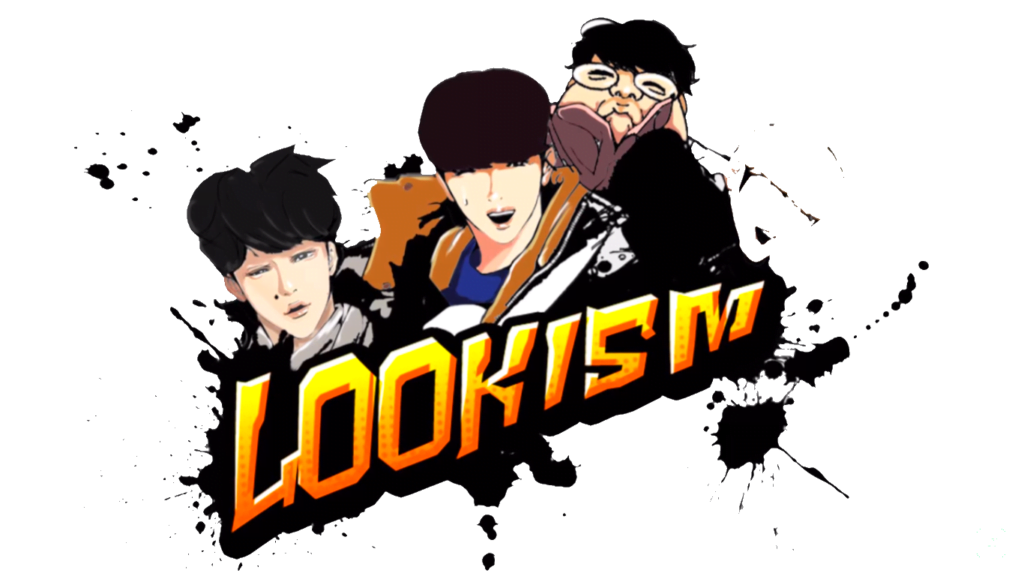
Character Psychology and Motivation
The psychological depth of characters in “Lookism Manhwa” is one of the series’ most compelling aspects, adding layers to the narrative that make their motivations and actions not only relatable but also richly complex. Each character is crafted with a distinct psychological profile, shaped by their personal experiences, insecurities, and desires. For example, Daniel Park’s journey from a bullied teenager to someone grappling with a newfound appearance-driven identity reveals his deep-seated need for acceptance and self-worth. Characters like Zack Lee and Mira Kim are driven by their own unique insecurities and motivations, which are gradually revealed as the story unfolds. This intricate character development allows readers to connect with the characters on a deeper level, understanding not just what they do, but why they do it. The series excels in portraying how internal conflicts drive external actions, making the characters’ journeys feel authentic and emotionally resonant.
The Mental Toll of Lookism
“Lookism” doesn’t shy away from depicting the mental toll that societal pressure can take on individuals, offering a poignant commentary on the consequences of lookism. The manhwa explores the psychological impact of being constantly judged by one’s appearance, leading to issues such as anxiety, depression, and a pervasive sense of inadequacy. Characters who face bullying and discrimination because of their looks often struggle with feelings of worthlessness and isolation. The series also delves into the damaging effects of living up to societal beauty standards, where the pressure to conform can lead to a loss of identity and self-esteem. Through its portrayal of these challenges, “Lookism Manhwa” raises important questions about the true cost of a society that values appearance over substance, making it a powerful exploration of the human psyche in the face of relentless societal expectations.
Interpersonal Relationships
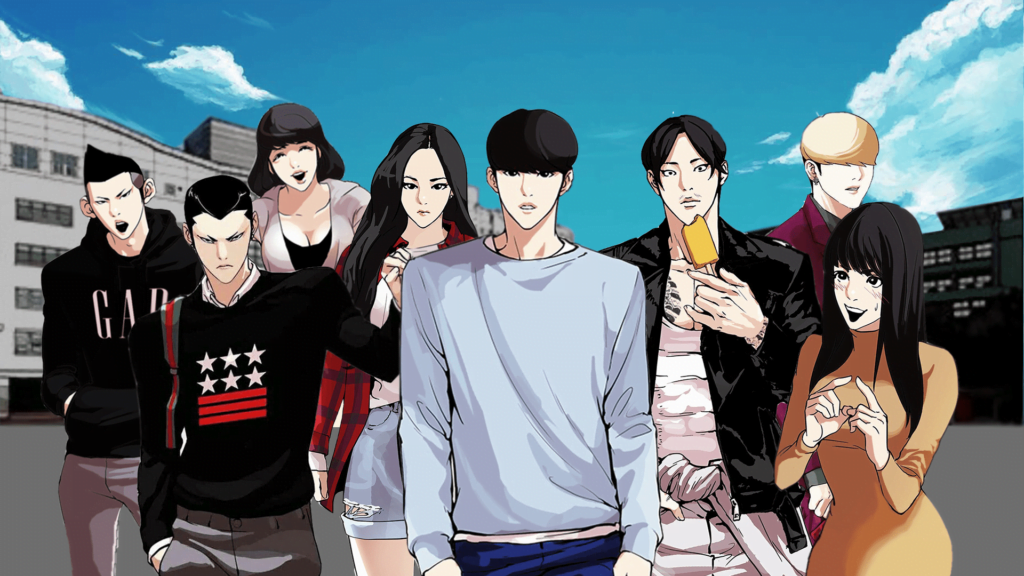
Friendship and Loyalty
The theme of friendship is central to “Lookism Webtoon”, underscoring how loyalty and support can profoundly impact individuals as they navigate challenging circumstances. The bonds between characters like Daniel Park, Jay Hong, and Vasco extend beyond superficial connections; they are grounded in mutual respect, trust, and a steadfast commitment to one another.
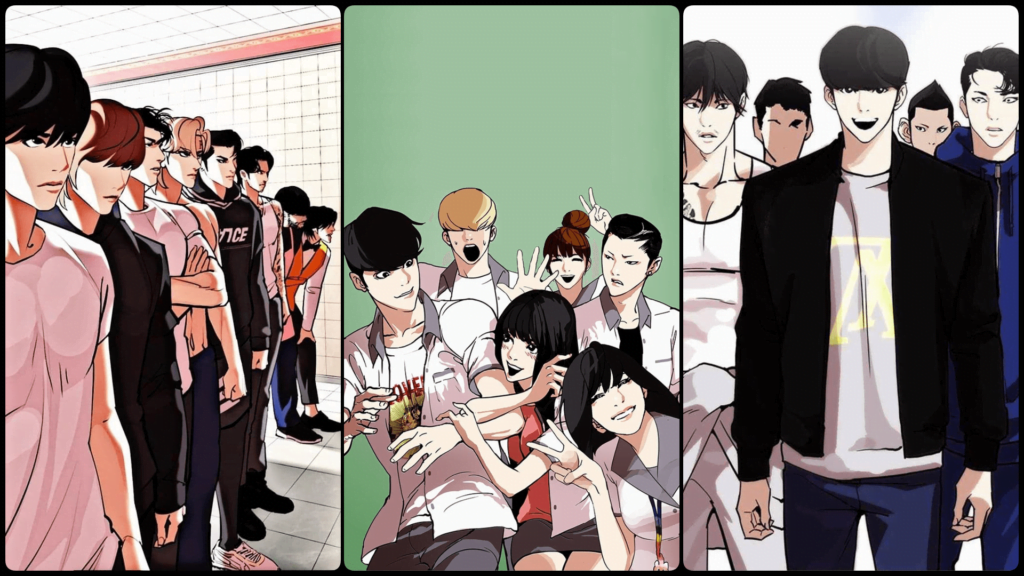
These friendships serve as vital lifelines for the characters, providing them with the strength to endure societal pressures and personal struggles. “Lookism Manhwa” beautifully portrays how true friendship transcends appearances, focusing on the genuine connections that offer strength and solace. Through these relationships, the manhwa highlights the significance of standing by those who matter, even amidst adversity.
The Shadow of the HNH Group and Rival Gangs in Lookism
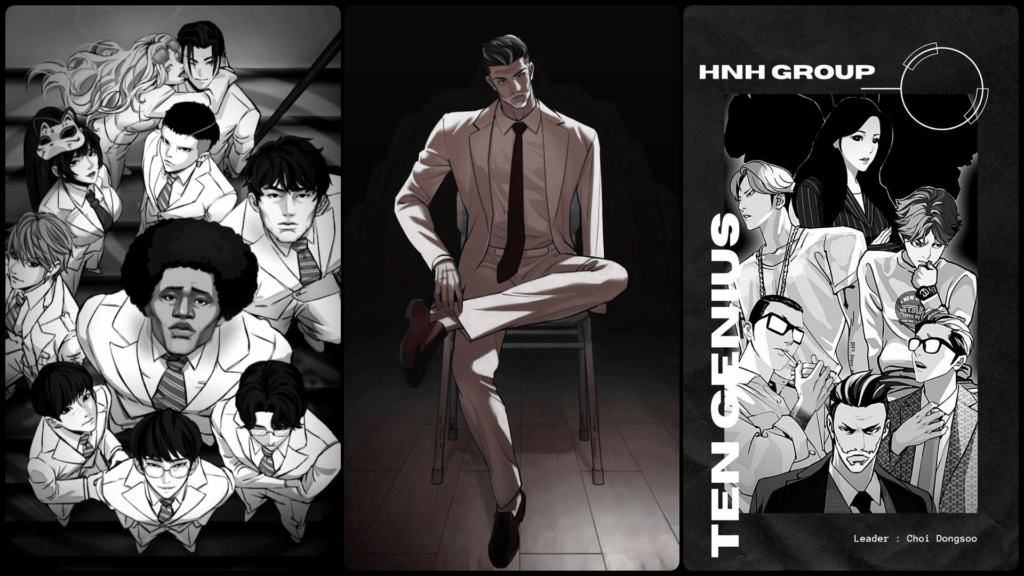
In “Lookism Manhwa”, the true threat extends beyond mere physical confrontations; it is embodied by the sinister HNH Group, a corrupt organization that manipulates lives and represents societal decay. Their elite enforcers, the “10 Geniuses”, symbolize both the abuse of power and the crushing weight of societal expectations. The protagonists’ journey involves dismantling this systemic corruption to seek justice.
Big Deal & Hostel B
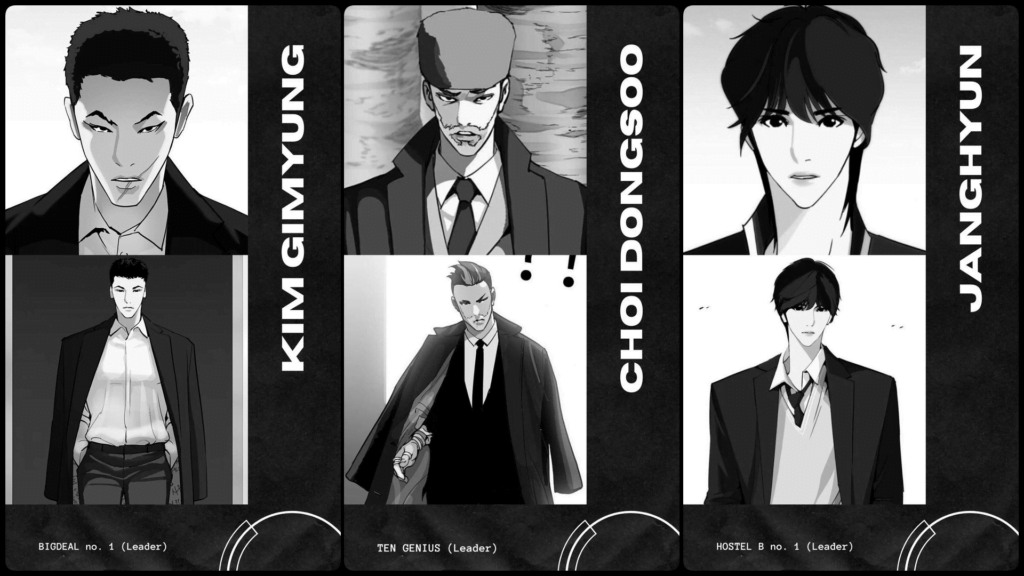
However, the HNH Group isn’t the only menace. Rival gangs like Big Deal, led by the strategic Jake Kim, and Hostel B under the OG leader Janghyun was good but under the cunning Samuel Seo, contribute additional layers of danger. Big Deal operates with a twisted code of honor, while Hostel B thrives on ruthless ambition and treacherous alliances. These groups create a perilous world of intrigue, where every conflict becomes a high-stakes battle for survival.
“Lookism Webtoon” masterfully illustrates a complex struggle against power and corruption, turning the fight into more than just a quest for survival. It becomes a battle for justice and the reclamation of personal agency in a world dominated by greed and deception.
Popularity, Anime Adaptation, and Impact on Readers
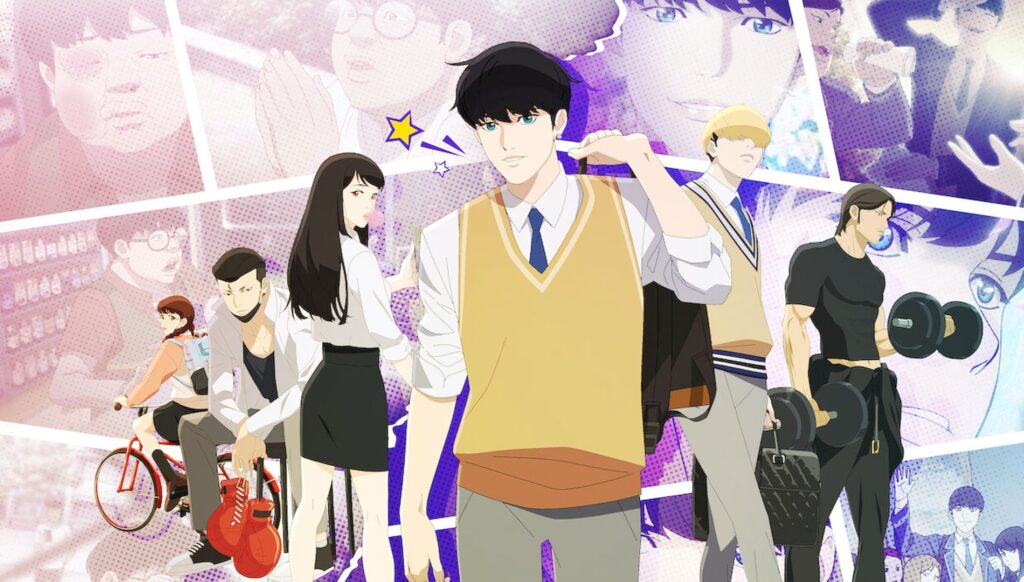
“Lookism” has captured the hearts of webtoon readers globally and gained mainstream recognition through its recent Netflix anime adaptation. This adaptation has expanded Lookism’s reach, bringing its compelling narrative and deep social commentary to a broader audience. The Netflix series remains faithful to the webtoon’s exploration of critical issues such as discrimination, identity, and societal pressure, making it accessible to both long-time fans and newcomers. The move to Netflix has significantly enhanced Lookism’s popularity, transforming it into a cultural phenomenon that continues to engage and influence viewers worldwide.
Emotional Engagement and Powerful Lessons
The anime adaptation amplifies the emotional engagement that readers have long experienced with “Lookism Webtoon”. Through stunning visuals and dynamic storytelling, the Netflix series vividly brings to life the relatable characters and the profound lessons about self-worth, identity, and societal expectations. The animated format deepens the connection with these characters, making the themes of “Lookism” resonate even more powerfully. The series reinforces the importance of staying true to oneself amidst external pressures and valuing genuine relationships over superficial appearances. With its adaptation on Netflix, Lookism’s impact reaches new heights, leaving a lasting impression on audiences and cementing its status as a must-watch in contemporary media.
Conclusion
Overall Impressions: Strengths and Weaknesses
“Lookism” is a standout manhwa renowned for its compelling storytelling and incisive social commentary. It shines in character development and effectively addresses critical issues such as appearance-based discrimination and identity struggles, making it a must-read for fans of the genre. While some story arcs may feel prolonged, impacting the pacing for certain readers, the series’ ability to engage and provoke thought remains a significant strength.
The Enduring Message of “Lookism”
At its core, “Lookism Webtoon” delivers a powerful message: true beauty lies within, and societal standards should never dictate one’s worth. The manhwa encourages readers to look beyond appearances and appreciate the inner qualities that truly matter, offering a profound reminder of self-acceptance and authenticity.
If you’re captivated by Lookism’s blend of intense action and deep emotional arcs, you may enjoy exploring other manhwa that masterfully weave themes of revenge and justice into their narratives. Our blog on the Best Revenge Manhwa delves into similar stories that excel in both action and emotional depth. Whether you seek relentless action, intricate plotlines, or a compelling tale of retribution, these manhwa deliver on all fronts. Check out the recommendations and find your next gripping read.

